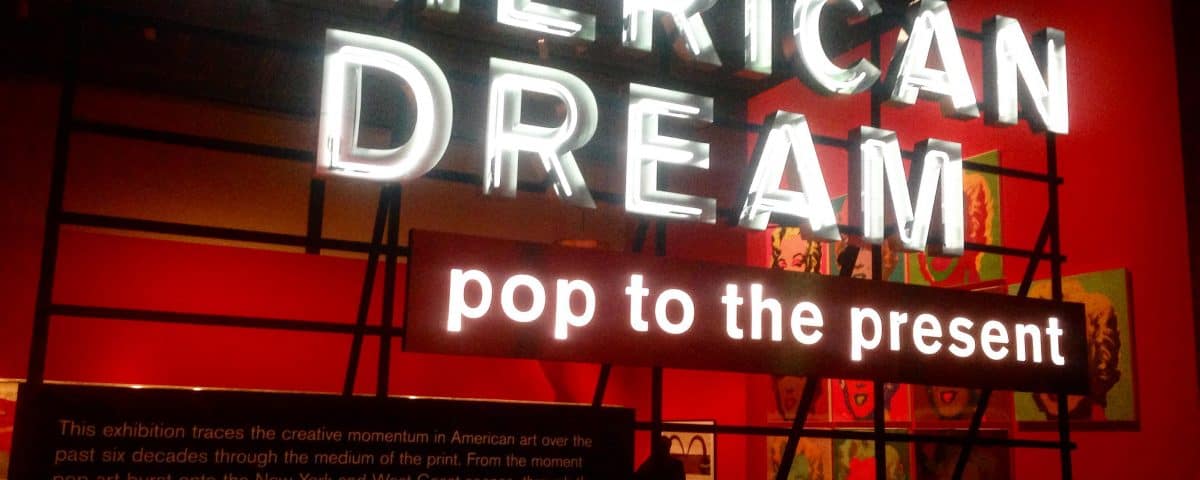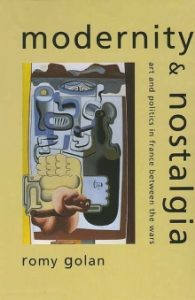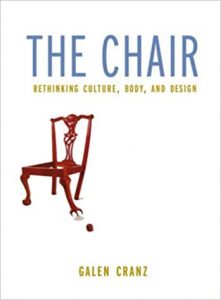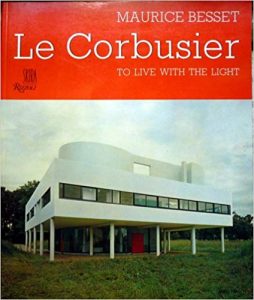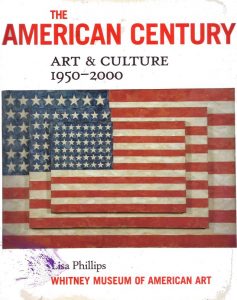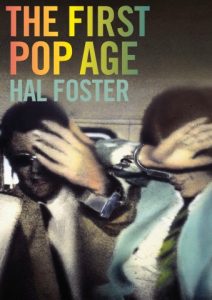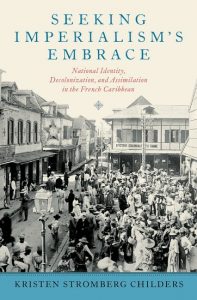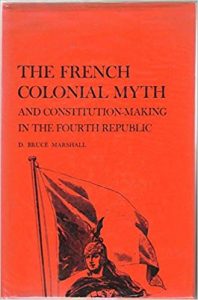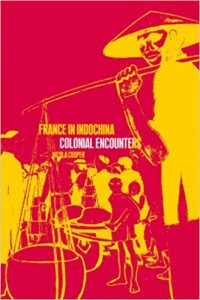
Book review for An American (Homeless) in Paris
25 July 2018
5 Literary Hotspots in Paris
9 August 2018The Library is pleased to present the Culture Picks for the month of August, curated, researched and written by Library volunteer Mike Duffy. August in Paris means fewer Parisians as many will be on their summer holidays. For those who stay in the city, there are some worthy exhibits to check out before they close at the end of the month.
Our Picks this month include an exhibition of works by UAM (Union of Modern Artists) artists, architects, and artisans starting in the 1920s, including photos, furniture, and drawings created during this time of “modern adventure.” Another exhibition focuses on the promise and contradictions of the American Dream through pop art prints by artists such as Jasper John, Jim Dine, Ed Ruscha, Cy Twombly, Kara Walker, and many others. And finally, a challenging exhibition more than 200 paintings, drawings and prints from those journeys present various, differing, even contradictory views of France’s colonies.
Guest blogger: Mike Duffy lives in Paris following his retirement from a career in university teaching and management. He spent his first 30 years in Pennsylvania (born in Pittsburgh, college and grad school in Philadelphia), then spent a bit more than that in California where he taught accounting and finance at the Universities of California (Berkeley), Southern California and San Francisco. He can now be found in art museums, historic sites, and concert halls throughout the city.
UAM — A MODERN ADVENTURE
PAVILLON CARRÉ DE BAUDOUIN
Through 29 September 2018
The Union of Modern Artists (UAM) broke with old styles, old materials, old ideas to create 20th Century design in architecture, fine arts, furniture and fabric to complement the open, democratic lifestyle flourishing in France, Western Europe and the United States. Previously, Art Nouveau and Art Deco had moved to replace gaudy, overdone, crowded late19th century decor (think fin de siècle and Victorian), but starting in the 1920s UAM stripped away the sinewy, ornamented look of Art Nouveau architecture and furniture and the geometric adornments of Art Deco facades and interiors. Struggling against conservative establishment tastes and economic interests, UAM artists, architects and artisans eliminated the hierarchy which put fine arts above crafts and defined what it was to be modern in France (and much of the rest of the world).
The move to the modern is most evident in an all-encompassing style. The building, most often in this exhibition a home, is presented as a complete work of art integrating furniture, art pieces, light fixtures, dishes, glassware and flatware with the architectural design. An array of designers worked on the various elements with the goal of creating spare but beautiful spaces for modern life. Ridding the building of ornament, removing rather than adding furniture and art, repeating modules — these became hallmarks of UAM work. Consider the many drawings, photographs and models of Le Corbusier’s work on display. These are unadorned, repeating rectangles. Even the window frames are lean. And look at the desk for a doctor’s office designed by Pierre Chareau, beautiful wood but simple design. A truly remarkable example of the entire work of art is shown in the slideshow of Chareau’s masterpiece, La Maison de Verre (The House of Glass) (1927 – 1931). All of the elements create a dramatic space for living. It is hard to believe that it was designed 90 years ago.
One element which remained from earlier art movements was color; the oranges and purples of Matisse and the Fauves brightened interiors through painted walls and vivid upholstery. And look at the dynamic designs for fabric and clothing by Sonia Delaunay displayed in an alcove-like space. Tours of restored modern homes, Greek temples or California missions generally present beautiful but denuded shells. They lack the bold designs and colors which were part of the original “whole artwork”. This exhibition partly makes up for that for the modern house.
New building materials and new technologies sparked the creativity of architects and designers. Concrete and steel made wide, open spaces possible and new techniques to make glass added huge windows and glass walls to make sure that nature could be incorporated in the design of buildings. A Man Ray film clip shows Robert Mallet-Stevens’ early masterpiece La villa Noailles. You see an outdoor patio with a high wall punctured by rectangular openings which frame the French countryside. You don’t need a lot of pictures if your windows and walls present magnificent vistas carefully selected by the architect. Mallet—Stevens also brought in those who would become household names to design modern furniture made of stainless steel tubing, painted metal and other materials: Charlotte Perriand, Jean Prouvé, Marcel Breuer, Eileen Gray among many others whose work is on display. Scores of photos, drawings and pieces of furniture throughout this huge exhibition make evident the talent unleashed by using novel materials in collaborative efforts. Be amazed, as I was, by the 1930’s School in the open air (École de plein air de Suresnes) with walls, all windows, which slide away to make an open-air classroom, using steel, glass and metal to create a wonderful environment for children.
UAM architects and artisans cared deeply about design, but they also cared very much about providing beautiful houses for everyone. Mass production and modularization could make affordable houses and furnishings which would lift the sprits of the people. UAM shared the collaborative ethic and stylistic tendencies used to create a modern home as a complete art work with nearly contemporary groups in Austria (Vienna Secession), Germany (Bauhaus) and the Netherlands (De Stijl). In France, however, there was no single institution or unified aesthetic. Instead, there was a common desire to embark together on “a modern adventure” which we can now join at the Pompidou Center.
Recommended books from the Library collection:
THE AMERICAN DREAM: FROM POP ART TO TODAY — PRINTS FROM THE BRITISH MUSEUM
FONDATION CUSTODIA
Through 2 September 2018
The American Dream: From Pop Art to Today illustrates the promise and contradictions of the American Dream from the sunny, brightly colored Gumball Machine (1970) of Wayne Theibaud to dark reminders of America’s cruel enslavement of Africans in three works by Kara Walker near the end of the exhibition. What is the American Dream? The answer provided in these exceptional works, all prints, may be that we are not all one thing or another, that we are both the stoned optimists exploring space and the moon in Rauschenberg’s Stoned Moon series and the dispirited people looking at Warhol’s repeated newspaper image of grieving Jackie II (1965). The 86 works on display also illustrate the remarkable range of techniques and materials used by American artists making prints over the past 60 years and the importance of those who established fine art printing studios on the East and West Coasts. In a wonderful example of art and ideas transcending borders, this outstanding show of American artists is brought to Paris through the collaboration of Fondation Custodia, the British Museum and the Terra Foundation for American Art. The themes and artistry provoke admiration, appreciation, deep thoughts, disappointment or anger at the failures of the dream and smiles at the familiar, small pleasures of daily life.
If the American Dream itself is a multitude, so too are the styles used to express the attendant ideas, concepts and emotions. There is the oddly sterile Pop Art cynicism of Lichtenstein comic book frames, the Minimalist rejection of figures and obvious content in Ellsworth Kelly’s Colored Paper Image XV (Dark Gray and Blue) (1976), the photorealism of ’60 T-Bird and Burbank Street, Alameda both by Robert Bechtle in 1967 and the beautiful colors and geometry of Anni Albers print based on one of her exceptional textile designs. Among the familiar images of the prolific painters and printmakers of the recent past — Jim Dine’s Five Paintbrushes (1972), Jasper John’s enigmatic flags, targets and maps, Cy Twombly’s scribbles — a standout is Made in California (1971) by Ed Ruscha. With its amazingly liquid orange letters, this work combines thematic elements of commercial art and fine art skill in the California version of the American Dream.
All types of printing techniques were used to produce the works in this exhibition — dry point, monoprint with collage, lithography, silk screen, etchings — and two stand out for their rarity in this show or the novelty of the technology. Two woodcuts by Vija Celmins, Night Sky Woodcut (1997) and Ocean Surface Woodcut (1992), bring this very old technique to our attention with the latter being an example of one year’s effort producing a noteworthy work of art. Forty years after Made in California, Ed Ruscha worked with Mixografia (a registered trademark), an innovative Los Angeles printer which has refined techniques for rendering prints which are three-dimensional rather than two. Two pieces from his 2014 Rusty Signs series illustrate his continuing development as an artist and his reframing of the American Dream in his seventh decade. The technical skill, the work with one of the 20th century’s truly innovative printers and the deep dive into the sadness of the end of parts of the dream/reality of his Golden State are testament to his enduring contributions to our understanding of art and of ourselves. These works, nearly the last in this outstanding exhibition, offer a fitting close to this 60-year examination of the American Dream through the eyes of exceptional artists and printmakers.
Recommended books from the Library collection:
PAINTINGS FROM AFAR
MUSÉE DU QUAI BRANLY — JACQUES CHIRAC
Through 6 January 2019
In the 19th and 20th centuries evangelists, explorers and exploiters went from France to create a colonial empire which by 1900 would be the second largest in the world. Artists joined the travelers to record and study foreign lands and peoples. In this interesting but challenging exhibition more than 200 paintings, drawings and prints from those journeys present various, differing, even contradictory views of France’s colonies. Idyllic paradise or untamed lands? Industrious or idle peoples? Economic engines for the French nation or opportunities to bring civilization to unfortunate inferiors? These points of view are all present in the works of artists, many workers for the French state, some independent adventurers, others settlers in the colonies, others still recipients of grants to burnish the image of colonial lands in the 20th Century. Through the bright light of deserts, dense forest foliage, flowing robes, domineering colonial masters or laboring local populations, we see what these artists saw or imagined or what they were expected to record.
This exhibition emphasizes, in part, the exotic attraction of distant lands opening up for trade and empire building. The light and warmth of Algeria along with the colorful attire, rich markets, oases, mosques and more presented an Impressionist’s ideal world to artists such as Albert Lebourg whose very fine Street in Algiers (1872 – 1877) with its dappled stucco building in light and shadow appears early in the exhibition. In addition, the French found lush, strange flora and fauna in many locales and these are depicted in varied artistic styles, including a very large Art Deco lacquer panel of Jean Dunand depicting a fierce tiger or his Elephant (1942). There are elements of fantasy and wonder in Dunand’s works which were prepared for the 1931 great exhibition held in Paris to celebrate the glories of the French colonial system at a time when theories of racial hierarchy and superiority held sway in Europe and the United States. Many of the artworks form the exposition continued to be displayed until the 1960s in the Palais de la Porte Dorée which was built for that purpose.
The people encountered by early French naval personnel, curious explorers, evangelists, and artists such as Gaughin are sometimes innocent, naive dwellers in Paradise where life is nearly effortless — see the almost laughable Two Indians in a canoe, an 1860 oil painting in which one person lounges, smoking, a paddle casually dangling in the water while another holds aloft a bundle of branches to catch the wind. There are several very good portraits of men and women which show attention to the individual rather than the many fantasy portrayals of “types” which are also on display. (We might recall that during 20th century expositions held in Paris people from the colonies were put on display like animals in pens so the French and other Europeans could see “natives” or “savages” in supposedly realistic settings.)
Also there are excellent works which incorporate characteristics of modern European painting. Notable are Site of the volcano on Réunion (1931) with its wonderful blue foliage and Ambohimanga (1925) with its orange sky and oversized blue trees depicted in oil, wax and sand. A standout work, Along Bay (end 1920s – start of 1930s), shows a man, perhaps unrealistically not sweating, as he paddles his small boat on beautifully depicted water in front of blue/purple rocky cliffs. This is an attention grabbing piece from a time when Asian colonies were increasingly important to France.
An 1892 work, Jules Ferry receiving the delegates from the colonies, shows what we would now call a group of old white men planning the expansion of the French colonies some time after the European powers had met to divide Africa into colonies, especially to satisfy the newly formed German nation’s demand that it, too, should have colonies like the others. This later led to Italy’s invasion of Ethiopia, which Hitler cited as proof that other nations would not act to stop invasions of some countries. The difficulty of viewing the past through later lenses is highlighted by the fact that these artworks have been kept out of public view for the past six decades as European dominance of vast areas of the world ended peacefully or not. The once great empires — and much of the art on display here was propaganda to convince the French that their empire was great — disappeared as entities, but their legacies remain. It is no accident that many migrants arrive “from afar” speaking French. Stories of post-colonial wars, revolutions, arbitrarily imposed borders, poverty and, indeed, today’s great migrations are not meant to be part of this exhibition but should be kept in mind as you learn from the depictions of exoticism and exploitation.
Recommended books from the Library collection:

